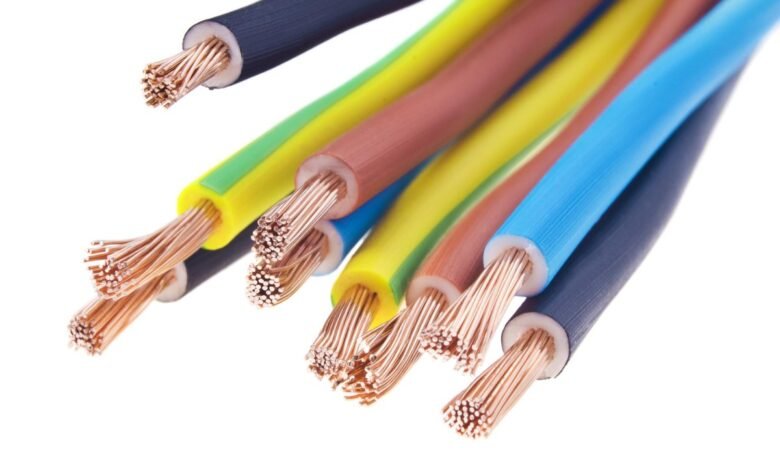
We often take them for granted, but electric cables are the unsung heroes of modern life. They silently power our homes, businesses, and industries, carrying the invisible current that fuels our world. But what exactly are these essential connectors, and how do they work? This blog post demystifies electric cables, exploring their anatomy, types, and crucial applications.
Decoding the Anatomy of an Electric Cable
Imagine an electric cable as a miniaturized pipeline. At its core lies the conductor, typically made of copper or aluminum, responsible for carrying the electrical current. This conductor is then shrouded in a layer of insulation, a vital barrier that prevents unwanted electricity flow and protects against shocks. The type and thickness of insulation determine the cable’s voltage rating and suitability for different environments.
Next comes the sheathing, the tough outer layer that shields the cable from physical damage, moisture, and environmental elements. Additional protective layers like armoring or braiding might be employed depending on the application.
A Multitude of Electric Cable Types: Choosing the Right One
Now, let’s explore the diverse landscape of electric cable types, each with its unique strengths and applications:
- AC Power Cables: The workhorses of your home carry alternating current (AC) to power appliances, lights, and electronics. Common types include Romex for in-wall wiring and extension cords for temporary use.
- Coaxial Cables: Essential for transmitting high-frequency signals for cable TV, internet connections, and radio communications. Look for RG-6 for standard applications and RG-11 for longer distances.
- Fiber Optic Cables: Utilizing light pulses for data transmission offers superior bandwidth and speed compared to copper cables. Ideal for high-speed internet and data center networks.
- Speaker Cables: Designed to transmit audio signals accurately, these come in various gauges and configurations to optimize sound quality. Choose AWG ratings based on speaker distance and power requirements.
- Low-Voltage Cables: Used for control systems, security alarms, and data transmission; these operate at lower voltages for specific applications. Common types include Cat5e for Ethernet networks and thermostat cables for HVAC systems.
- Submarine Cables: These underwater giants carry high-voltage electricity across vast distances, connecting continents and powering remote regions.
- High-Voltage Transmission Lines: Towering networks carrying electricity from power plants to distribution centers, forming the backbone of national grids.
- Automotive Wiring: Complex network cables power and control every aspect of modern vehicles, from engine functions to infotainment systems.
- Medical Equipment Cables: Specialized cables ensure the safe and reliable operation of medical devices, monitoring patients, and delivering therapies.
Beyond the Basics: Advanced Considerations for Specialized Needs
Delving deeper into specific cable types and features might be necessary for specialized applications. Here are some examples:
- Armoured Cables: Featuring an additional metal layer for protection against physical damage, ideal for industrial settings or exposed areas.
- Shielded Cables: Incorporate a metallic shield to minimize electromagnetic interference (EMI), which is crucial for sensitive audio and data applications.
- Fire-Resistant Cables: Designed to withstand high temperatures in case of fire, essential for safety in critical infrastructure.
- Direct Burial Cables: Possess special insulation suitable for underground installation, protecting against moisture and damage.
Safety Precautions
Working with electric cables requires utmost caution to prevent accidents and injuries. Here are some essential safety tips:
- Turn Off Power: Always turn off the power supply before handling electrical cables or performing electrical work.
- Inspect Cables Regularly: Inspect cables for wear, damage, or overheating signs. Replace any damaged cables immediately.
- Avoid Overloading: Do not overload cables with excessive electrical load beyond their capacity, leading to overheating and fire hazards.
- Proper Installation: Ensure cables are installed according to manufacturer guidelines and local electrical codes to prevent short circuits and electrical faults.
- Use Protective Gear: When working with electric cables, wear appropriate protective gear such as gloves, safety goggles, and insulated tools to minimize the risk of electric shock.
Installation Methods
Proper installation is crucial for the safe and efficient operation of electric cables. Here are some common installation methods:
- Surface Wiring: This method involves running cables along the surface of walls or ceilings, typically using conduit or cable trays for protection.
- Concealed Wiring: Concealed wiring hides cables within walls or floors, providing a neater appearance. However, it requires careful planning and may be challenging to modify or repair.
- Overhead Wiring: Overhead wiring is commonly used for outdoor installations, such as power lines between utility poles.
- Underground Wiring: Underground wiring is buried beneath the ground, offering protection from environmental elements and minimizing visual impact. It’s often used for outdoor lighting and residential electrical connections.
Common Problems and Solutions
Despite their durability, electric cables can encounter various issues over time. Here are some common problems and solutions:
- Cable Damage: Damage to the insulation or sheath can expose the conductor, increasing the risk of electrical faults. Replace damaged cables promptly to prevent accidents.
- Overheating: Overloaded cables or poor ventilation can cause overheating, leading to insulation degradation and fire hazards. Ensure cables are properly rated for the intended load and environment.
- Corrosion: Exposure to moisture and chemicals can cause corrosion, weakening the cable’s integrity. Use corrosion-resistant materials for outdoor or industrial applications.
- Rodent Damage: Rodents are notorious for chewing through cables, causing short circuits and electrical failures. Protect cables with rodent-proof sheathing or install deterrents to prevent damage.
Conclusion
Electric cables are the lifelines of modern civilization, providing the essential infrastructure for power, communication, and automation. By understanding the different types, components, safety precautions, and installation methods, you can ensure electrical systems’ reliable and efficient operation. Whether you’re a homeowner, contractor, or enthusiast, this guide equips you with the knowledge to confidently navigate the world of electric cables.



